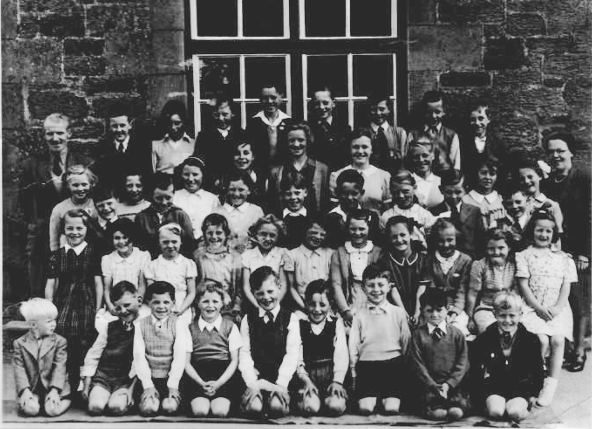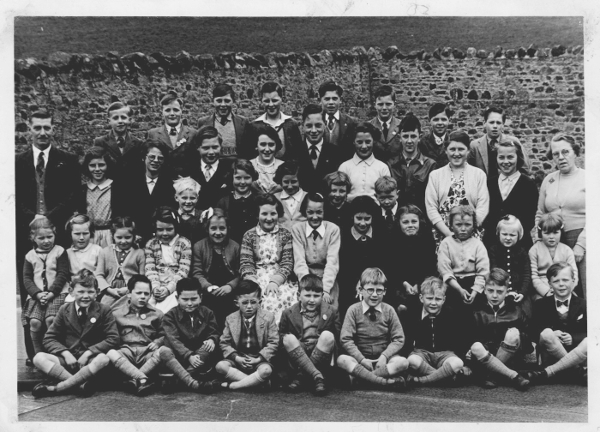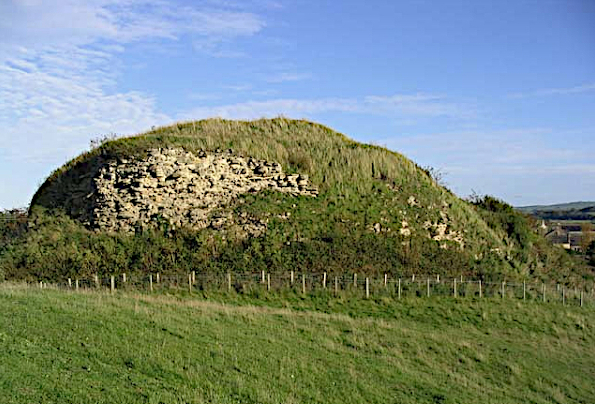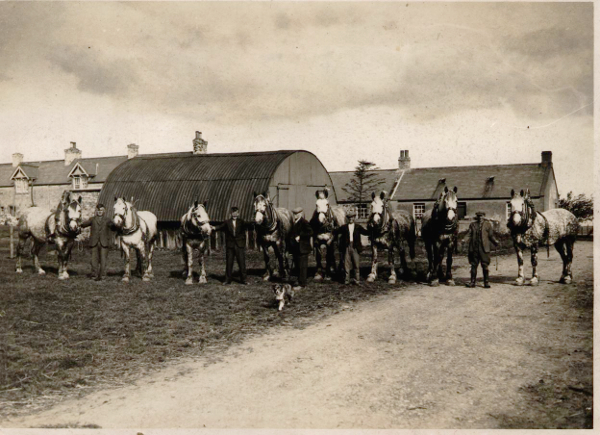Wark - school and village
Wark Castle
Wark Common
Farming in Wark (photos in ‘Agriculture’)
Thorburn family
Wark

Wark School 1950s
Back row, left to right - Mr. Carruthers, Tim Douglas, Derek Laidlaw, Robert Thomson, Alec McKie, John Brown,
Michael Crozier, Gordon Moffat, David Barton
Second to back row, left to right - Joyce Lowrie, Margaret Armstrong, Margaret Milton, Doreen Stuart, Nessie Armstrong,
Sheila Moffat, Nancy Clark, Ann Hall, Margaret Brown, Miss Atkinson
Third to back row, left to right - Tony Snaith, George Patterson, Betty Younger, George Dunn, Ian Cowe, ? Watson,
Ewen Carruthers, Robert Brown
Second to front row, left to right - Margaret Coxon, Dorothy Brown, ? Watson, Rae Alexander, Gladys Moscrop,
Vivian Winter, Margaret Culbertson, Margaret Douglas, Alsia Laidlaw, Susan Laidlaw, Hazel Hislop
Front row, left to right - David Clark, Brian Hislop, Ian Culbertson, Gordon Snaith, George Anderson, Ian Patterson,
Douglas Coultherd, Ronnie Muscrop, Jimmy Skeen

Wark School 1950s

Wark School 1965
Back row, left to right - Michael Heatley, Kenneth Allan, Gail Scott, Carol Young, Norma Gillie, Alison Potts,
Colin Tait, Alex Ferguson, Melville Swan, Neil Laidlaw, Jimmy Hope, Rory Ferguson.
Front row, left to right - Ann Kukk, Gary Burns, Pat Hope, Fiona Stuart, ? , Winnie Wilson, Ian Hogarth.

Wark School date?

Wark Fairy Garden 1950s, Coldstream Civic Week

View of Wark (from the Castle?) - date?

Wark village - date?

Wark ferry across the Tweed
Wark Castle

The remains of the large keep on the motte of Wark Castle
copyright Walter Baxter - geograph.org.uk/p/271091

A reconstruction of Wark Castle
Taken from Past Perfect
a joint project managed
by the Archaeology Section of Durham County Council
and the Conservation Team of Northumberland County Council
The following is an extract from a novel by a local author
Walter Espec, said to have been a giant of a man with black hair, a full black beard and a booming voice, was one of King Henry I’s closest allies. The two men shared the great sadness of their sons dying in accidents when young; (Henry’s son in the infamous ‘White Ship’ and Walter’s in a fall from a horse). As was the Norman way, the great barons were gifted land by the King in far-flung parcels so that they could not amass huge regional strength to challenge the monarch. Espec owned land in Bedfordshire, where he built Wardon Abbey, Yorkshire, where he built Rievaulx Abbey and Kirkham Priory, and at Wark where he built the castle which would control affairs between Scotland and England for more than 400 years.
The castle was first built around 1125 - 1130. Over the next four centuries, it was besieged regularly - indeed, there were three attempts by the Scots to take it in 1138 (in January, May and August). They succeeded in 1136, once in 1138, 1216, 1318, 1385, 1399, 1419, 1460 and 1513. In 1296, Robert de Ros (sometimes called Roos), a direct descendant of Walter Espec, was Constable of the Castle. He was seduced by the charms of Christine Mowbray, (despite his legal marriage to Laura), and handed ownership of the castle to the Scots. King Edward I sent a force of 1,000 men to take back the castle. Foolishly they camped at Pressen, just over two miles south of the castle. De Ros swiftly learned where they were and, in the middle of the night, slaughtered them.
But perhaps the biggest story associated with Wark Castle is the institution of the Order of the Garter. No source can agree on the date or the venue because all of the original records were destroyed in a fire. But Garter King of Arms is prepared to accept that the decision to create the Order could have been taken at Calais, Windsor or Wark at some point between 1331 and 1349.
The story - or myth - is that King Edward III was dancing with either the Countess of Salisbury or Joan Plantagenet, the Fair Maid of Kent, when her garter fell to the floor. The court tittered, causing Edward to pick up the garter and say ‘Honi soit qui mal y pense’ (shame on anyone who thinks evil of it). Wark’s case is mildly strengthened by the romantic evidence in the Pipe Rolls that Edward granted the Earl of Salisbury the barony of Wark for life. This meant that he paid no rent, save for a single red rose to be presented to the King at Midsummer.”
The landscape of Wark is dominated by a long, sinuous mound which runs roughly east-west. This feature, known as a kame, was formed by the deposition by glacial melt-water during the last glacial advance in the current Ice Age. The height of the kame provided a defensive feature that was used by the builders of the Castle. It occupies the top of the kame, where it is closest to the Tweed.
Wark Common

Wark Common cottages can be seen in the background, 1930s
Facebook ‘conversation’ following the publication of this photo
From George Anderson: Wark Common Farm. I grew up there in the late 1940s, 50s and early 60s.
From Catherine Arrowsmith: My granny lived there in the 40s and again in the 70s till she died
From John Jeffrey: My grandparents and parents, brothers and sister lived on this farm in the thirties. My grandfather and father could be on this photograph.
Neil Lyons: All I can say it's no changed
George Anderson: It has changed! The ‘Mill Shed’ is a different shape (it now has a pointed ridge) and No. 1 cottage has gone. Mulveys lived there in my time. I think the outdoor ‘netties’ at the top of the gardens have gone too. We got running water and bathrooms in 1960! Behind the photographer the pond has been filled in.
Neil Lyons: Number 1 cottage is still there - it’s just an office now, I live next door to Eric Mulvey who lived up at the common.
Catherine Arrowsmith: No.2 cottage only has one bedroom, as the front bedroom is part of the office now.
George Anderson: The green area at the end of the cottages today is where No.1 used to be. You can see the remains of the wall on the ground (see photo below). The office today is No.2 plus part of what was No.3. There were 3 single storey cottages and 4 two storey cottages back in the 1960s.

John Jeffrey: I worked on the cottages at Wark Common when they were renovated and had extensions built on the roadside. It was later than 1960. More likely 1962-63. The families living there at that time, if I remember rightly were - Mulveys, Kukk, Meg and Joe Anderson, Ken Allan and I think Bateys. My family moved from Wark Common during the war to Moneylaws, a farm also run by the Thorburn family.
George Anderson: The joiner, Ronnie Lambert, was working on the new extensions at the back of the houses. I left Wark Common in 1964. I think the houses were renovated again later. Could that have been when you worked there?
John Jeffrey: I worked on the extensions with Geordie Tait who was a joiner from Wark. I am sure you will remember him. He would play for Wark FC the same time as you. Ronnie Lambert was a mason/bricklayer; he built the extensions.
George Anderson: I played with Geordie Tait. I played in the very first Wark team that beat the KOSBs in the Kelso Cup final 1960 - John White included! Reg Luke, Jimmy Green, Geordie Swan etc. I just remember Ronnie Lambert putting in the wooden shelving - assumed he was the joiner.
From Catherine Arrowsmith: The house Mulveys lived in, no.1, is still there, although part removed. No.2 cottage is still a house with one bedroom. I asked the farmer that renovated the house and this was his reply:
“The answer is a bit of both. What was number 1 when we came - which was lived in by the Mulveys - was half stone built like the rest of the cottages and half concrete built. We knocked down the concrete and made an office out of the rest of No 1 and one room from no 2, leaving no 2 as a 1 bedroom cottage.”
George Anderson: It may well be that the original photograph shows the cottages before the concrete cottage was added and subsequently demolished. In which case it hasn't changed!
West Learmouth

West Learmouth Sports, 1949